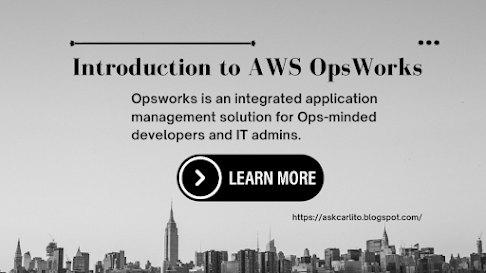Introduction to AWS OpsWorks
What is AWS OpsWorks?
Opsworks is an integrated application management solution for Ops-minded developers and IT admins. It is a DevOps offered by Amazon, where one can do operations such as Mode, Control and Automate Applications of nearly any scale and complexity. To learn in depth about the OpsWorks, check out the AWS Solution Architect Certification.
Mode, Control and Automate Applications
*Note: DevOps is a software development method that stresses communication, collaboration and integration between software developers and Information Technology (IT) operations professionals.
The AWS OpsWork also has the feature of reducing errors with conventional scripted configuration. OpsWork is based on Chef tool and works on receipts and the scripting languages will be based on these receipts.
The feature of Elastic Beanstalk container is that it is completely managed by Amazon. The OpsWork will be working as ‘Chef+Custom AMI’ concept, where we create layers. On top of it, the application is deployed along with the code.
Beanstalk vs OpsWork vs Cloud Formation
USAGE – The Cloud Formation and OpsWork are both used for application modelling, deployment, configuration and related activities. On the other hand, Elastic Beanstalk is an easy-to-use application management service for building web applications and web services with popular application containers,such as Java, PHP, Python, Ruby and .Net. It is also used to launch an application server and an instance.
SUPPORT – In OpsWork one can perform certain modeling and deployment but compared to cloud formation, it supports a very narrow range of applications. It supports EC2, EBS, and Cloudwatch. The Cloud Formation alternatively supports each and every application of Amazon including Elastic Beanstalk & EBS.
Cloud Computing Training
MODEL- The biggest difference between OpsWork and Cloud Formation would be higher level of services, which focuses on DevOps experience. In Cloud Formation, it doesn’t follow any model, and the template is directly created and exited.
The Cloud Formation is best suitable, when there is a need for large support for application and template model. Elastic Beanstalk is optimized for common web applications and web service patterns, while OpsWorks supports architectural patterns and not just the web applications.
OpsWorks employs an application management model, based on DevOps on concepts, such as stacks and layers.
It will provide an integrating experience for deployment, monitoring, auto-scaling and automation.
But, in Cloud Formation, it does not follow any model. Here, customers define templates and use them to provision and manage AWS resources, operating systems and application code.
Choosing the right option
- If the user needs an easy-to-use service to build apps, then Beanstalk is the best option.
- If the user requires DevOps model, which needs powerful end-to-end platform, OpsWork works best.
- If the user requires management-by-provider, then EC2 is the best option.
Want to Earn daily 500 to 800 USD
by selling High demand &
Ultra modern and novel Gadgets online ?
If you wish to take your knowledge to the next level, and take a structured approach in the form of training, then this AWS DevOps Course by Edureka is specially catered to meet your needs.
Got a question for us? Mention them in the comments section, and we will get back to you.
Want to Earn daily 500 to 800 USD
by selling High demand &
Ultra modern and novel Gadgets online ?












No comments: